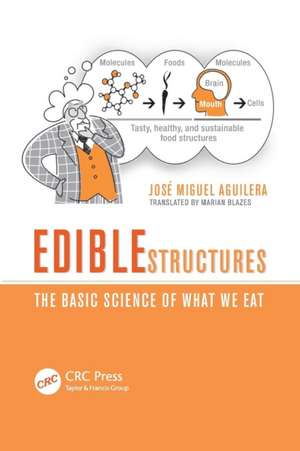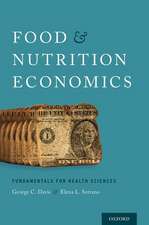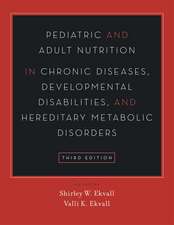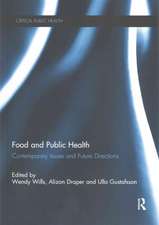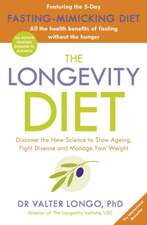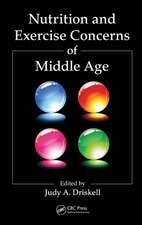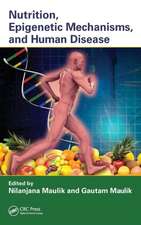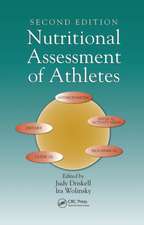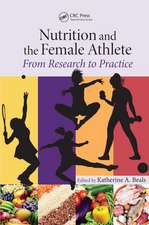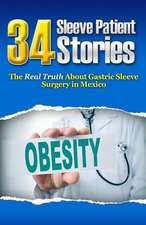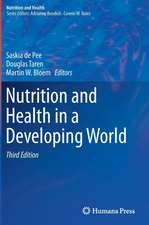Edible Structures: The Basic Science of What We Eat
Autor Jose Miguel Aguileraen Limba Engleză Paperback – 18 oct 2012
Drawing from the physical and engineering sciences, food technology, nutrition, and gastronomy, Edible Structures: The Basic Science of What We Eat examines the importance of food structures—the supramolecular assemblies and matrices that are created by nature and when we cook—rather than the basic chemical compounds that are the more traditional focus of study. The central objectives of this book are to address the pressing food trends of this century, including:
- Growing evidence that flavorful food structures are important for the delivery of the nutritious and healthful food molecules from which they are made
- A need to understand and control how food structures are created and presented as products that respond to nutritional requirements
- Opportunities to design certain foods to better suit the needs of modern lifestyles
- The empowerment of consumers and the appearance of the axis that connects the food we eat with our brain, digestive system, and the cells in our body
- The separation between a knowledgeable gourmet "elite" and the rest of the population who simply want to eat quick meals as cheaply as possible
Preț: 396.90 lei
Nou
Puncte Express: 595
Preț estimativ în valută:
75.96€ • 82.48$ • 63.80£
75.96€ • 82.48$ • 63.80£
Carte tipărită la comandă
Livrare economică 22 aprilie-06 mai
Preluare comenzi: 021 569.72.76
Specificații
ISBN-13: 9781439898901
ISBN-10: 1439898901
Pagini: 462
Ilustrații: 58 b/w images, 9 tables and Approx. 10 to 15 equations
Dimensiuni: 152 x 229 x 25 mm
Greutate: 0.63 kg
Ediția:New.
Editura: CRC Press
Colecția CRC Press
Locul publicării:Boca Raton, United States
ISBN-10: 1439898901
Pagini: 462
Ilustrații: 58 b/w images, 9 tables and Approx. 10 to 15 equations
Dimensiuni: 152 x 229 x 25 mm
Greutate: 0.63 kg
Ediția:New.
Editura: CRC Press
Colecția CRC Press
Locul publicării:Boca Raton, United States
Public țintă
Professional ReferenceCuprins
Nutritious and Delicious Molecules. Food Materials and Structures. Journey to the Center of Our Food. From Farm to Cells and Back. A Pinch of Mathematics. Nutritional and Culinary Thermodynamics. Between Brain and Cell. Culinary Technologies and Food Structures. The Pleasure of Eating. The Empowerment of Chefs. The Science that Fascinates Chefs. Healthy Habits. Final Comments.
Recenzii
"Students of gastronomy, nutrition, and food technology will find this well-illustrated book a splendid resource to augment their textbooks, and even serve as one. …basically the book is about the molecules that are shaped into the structures (and fluids, odors, and colors) that delight and nurture us. … Highly recommended. All readership levels.
–M Kroger, emeritus, Pennsylvania State University, University Park Campus in CHOICE Magazine
"The approach taken by the author is to discuss in a simple, narrative manner the industry, biochemistry, physiology, including taste of food constituents and what that means to us. Mixed with stories, it is a very pleasant but also instructive reading. With many references. Recommended to people who like to cook, eat, and advise on nutrition."
—Professor Zvi Laron, Pediatric Endocrinology Reviews, Vol. 10, No. 4, July 2013
–M Kroger, emeritus, Pennsylvania State University, University Park Campus in CHOICE Magazine
"The approach taken by the author is to discuss in a simple, narrative manner the industry, biochemistry, physiology, including taste of food constituents and what that means to us. Mixed with stories, it is a very pleasant but also instructive reading. With many references. Recommended to people who like to cook, eat, and advise on nutrition."
—Professor Zvi Laron, Pediatric Endocrinology Reviews, Vol. 10, No. 4, July 2013
Notă biografică
Jose Miguel Aguilera is a professor in the College of Engineering at the Pontificia Universidad Catolica de Chile (PUC). A chemical engineer (PUC, 1971) he received a master of science from MIT (1973), a doctorate from Cornell University (1976), both with specialization in food technology, and an MBA from Texas A&M University (1983). He has been the Head of the Department of Chemical and Bioprocess Engineering at PUC, Associate Dean for Development and the Director of Research and Postgraduate Studies in the School of Engineering. Dr. Aguilera is the author or editor of 13 books, 25 book chapters, and more than 170 articles on food technology and food engineering in international journals. He has been or is on the editorial committee of six international science journals, including Journal of Food Science , Food Engineering , and Trends in Food Science and Technology . He has been a visiting professor at the University of California at Davis, Cornell University, and Technical University Munich, a technical consultant for the FAO, and a scientific advisor for the Nestle Research Center in Switzerland, for more than 12 years. Among his most significant awards are fellowships from the Fullbright Commission (1989) and the Guggenheim Foundation (1991), and the Alexander von Humboldt Prize for Research (Berlin, 2002). In the US he has received the International Award (1993), Research and Development Award (2005), and the Marcel Loncin Research Prize (2006), all from the Institute of Food Technologists (IFT). He was appointed a commander in the Order of Orange-Nassau by the Dutch government, and is a Fellow of the IFT and the International Association of Food Science and Technology. In 2008 he was awarded the National Prize for Applied Science and Technology, the highest scientific honor in Chile, and in 2010 was first Chilean to become a foreign associate member of the U.S. National Academy of Engineering, fo
Descriere
Understanding the science behind cooking has become all the rage. In an entertaining and educational way, this book describes the science that transforms the structures of delicious food. The author reveals some of the intimate secrets of cooking, and explains how food molecules affect our health and well-being. The text also delves into the mysteries of modern cuisine. Through clear and objective essays, it answers many questions about food, raw materials, manufacturing processes, and the benefits and risks involved in our daily food consumption. It makes a fun and informative read for professional chefs, culinary students, and anyone interested in the science behind food.
